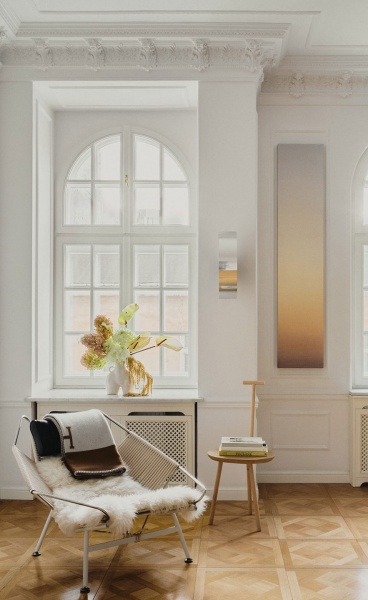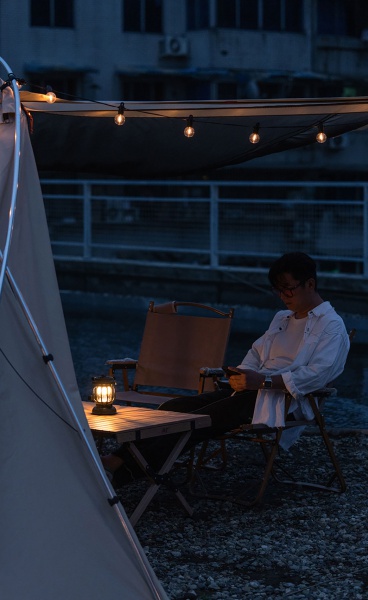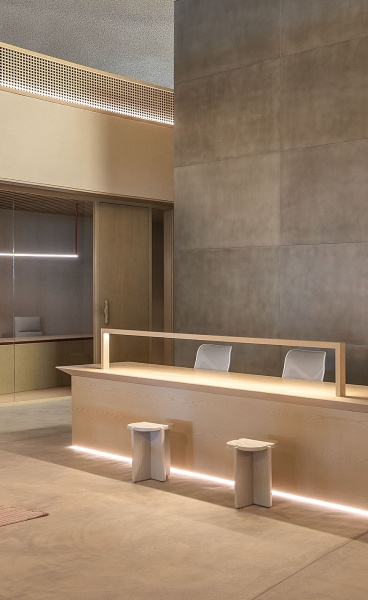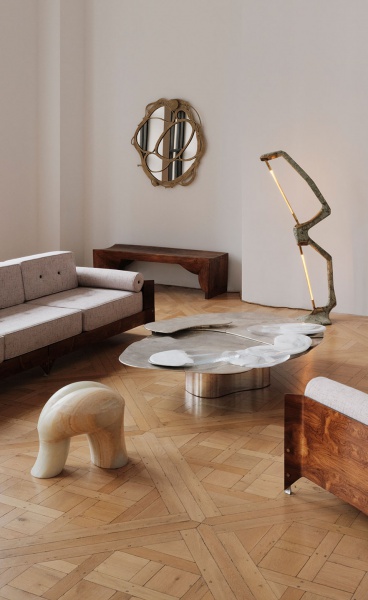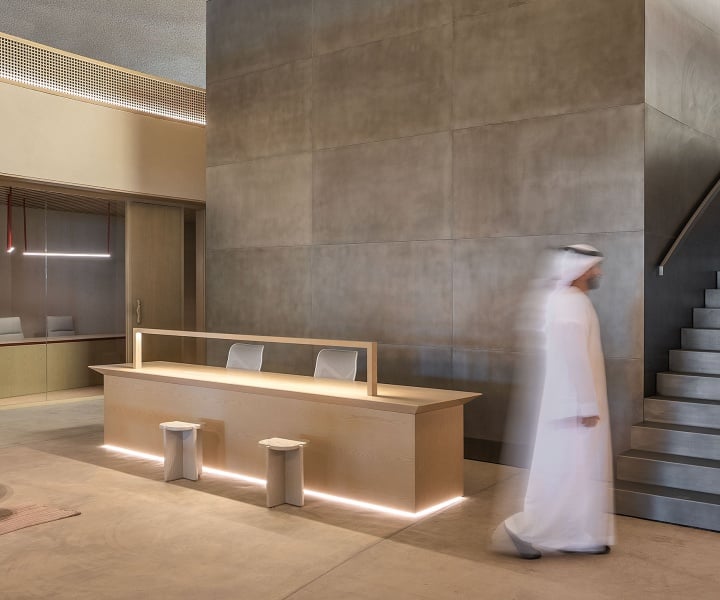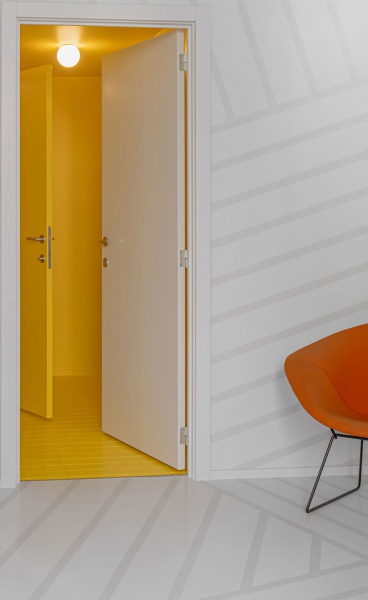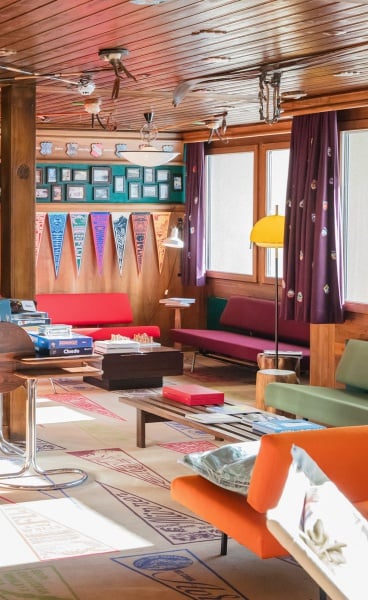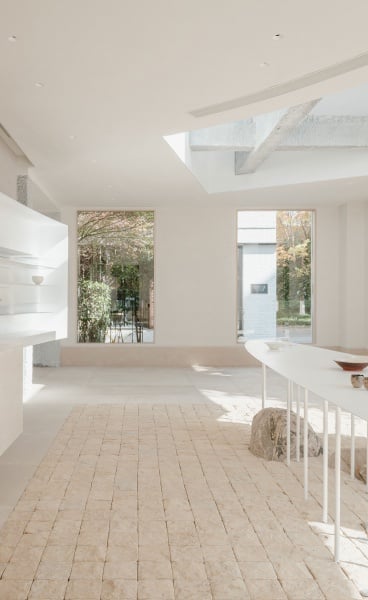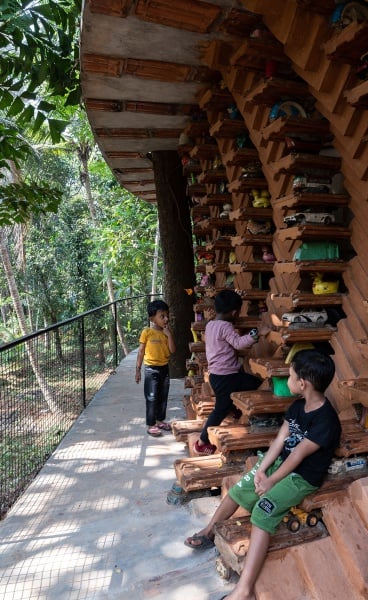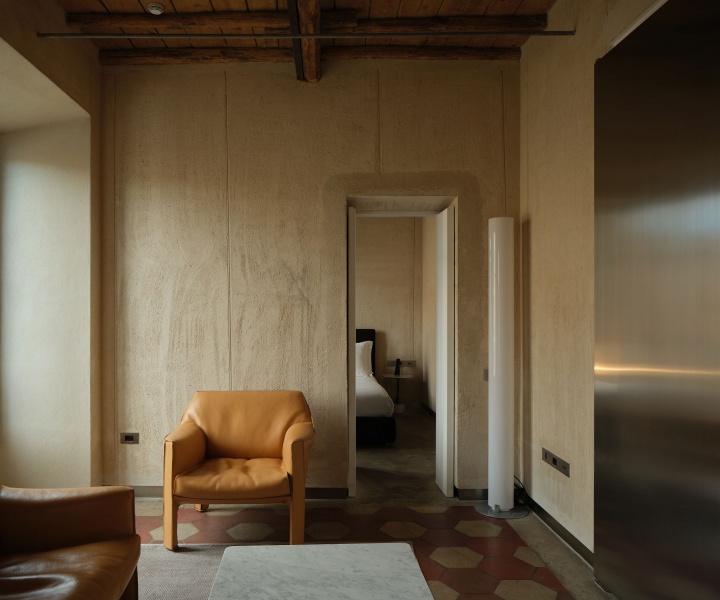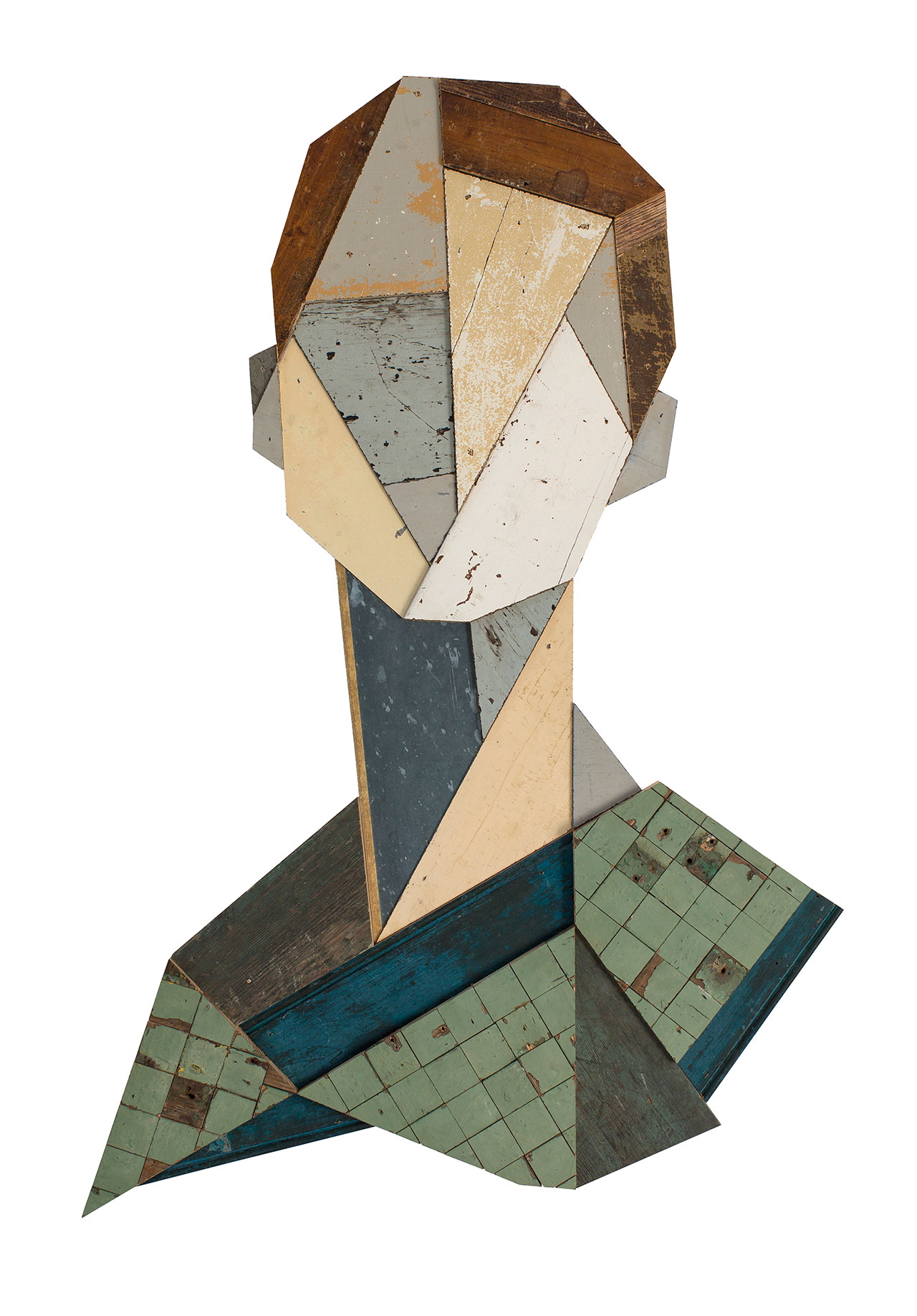
Miss Claire, 2015. Recycled wood sculpture, 114 x 67cm. Photo © Strook.
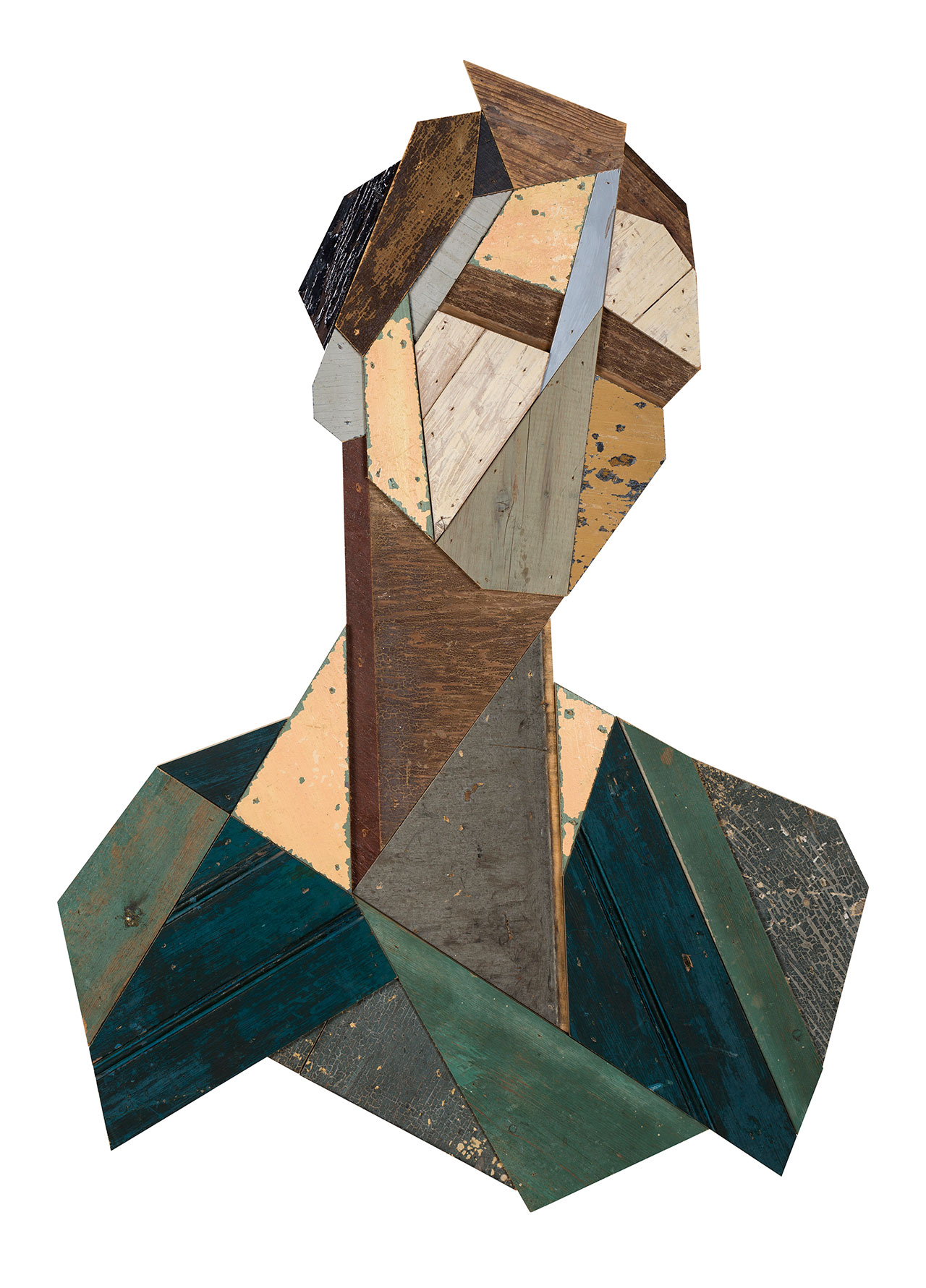
Miss Murielle, 2015. Recycled wood sculpture, 109 x 78,5 cm. Photo © Strook.
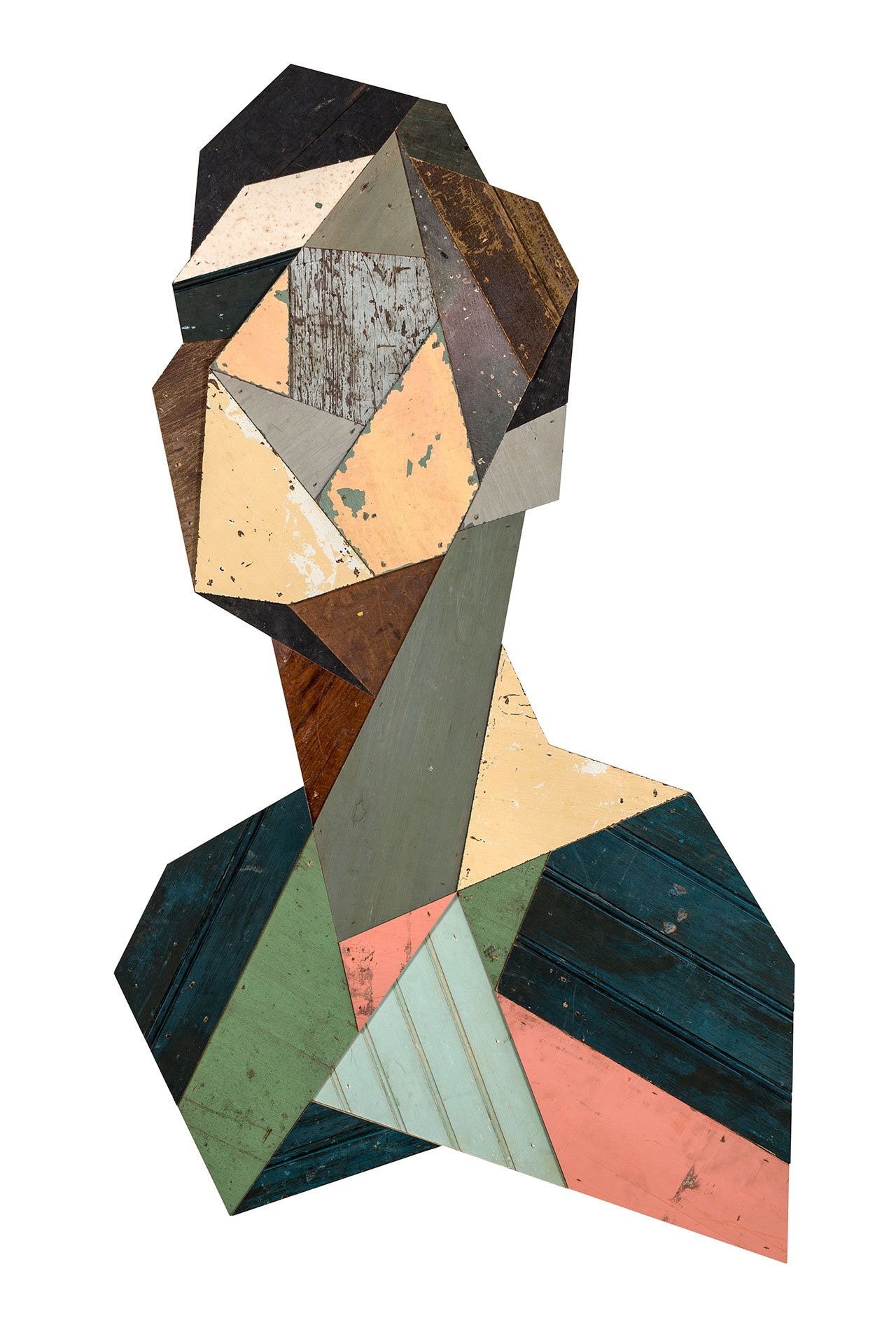
Mister Alexander, 2015. Recycled wood sculpture, 151 x 94 cm. Photo © Strook.
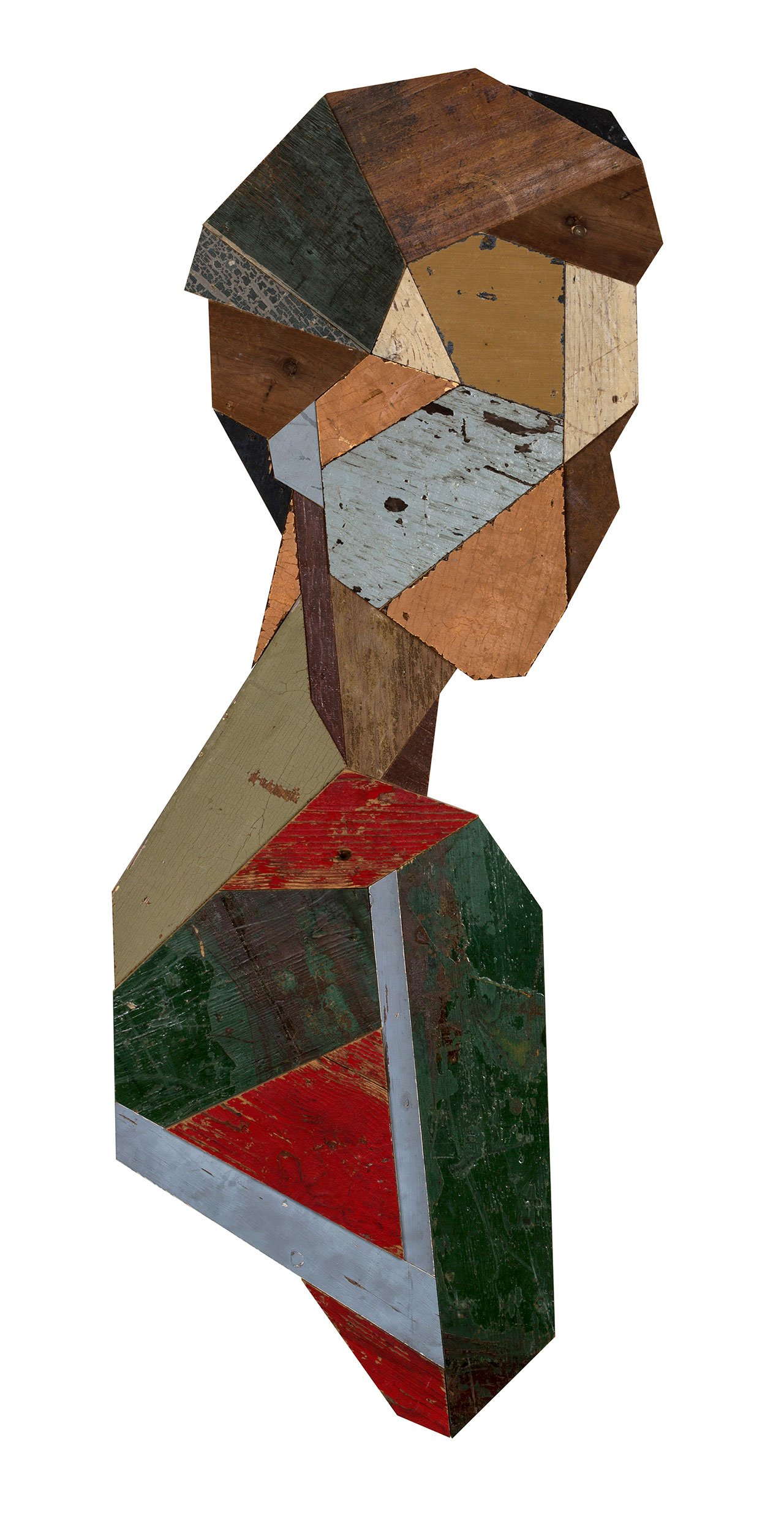
Miss Gloria, 2015. Recycled wood sculpture, 112 x 51,5 cm. Photo © Strook.
Upcycling is an important part of Stefaan’s creative process. He’s constantly on the search for old wood items which he “harvests” from construction sites, soon-to-be demolished factories or houses, as well as insider tips from friends who will message him the whereabouts of old floors, planks or doors. Stefaan never paints or treats this “new” old wood: “I like to work with the old patina of discarded wood; it’s like a footprint of time because every piece has its own story and comes together in a new composition which then forms yet another story,” he says, poetically likening the pieces of wood to “silent witnesses of an unknown history.”
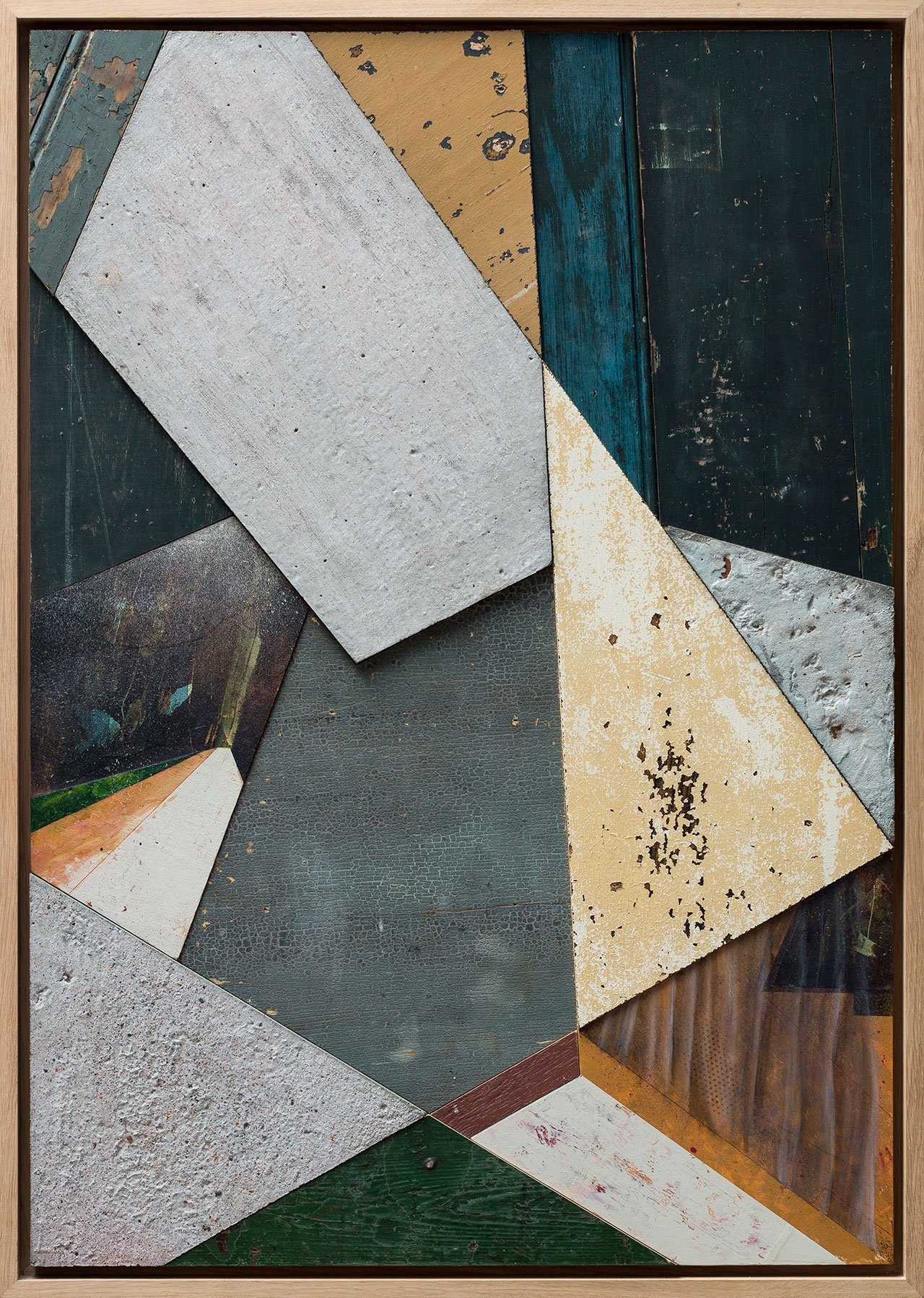
Back to the forest, 2015. Recycled wood, concrete, acrylic and medium on wood panel – Framed, 105 x 75 cm. Photo © Strook.
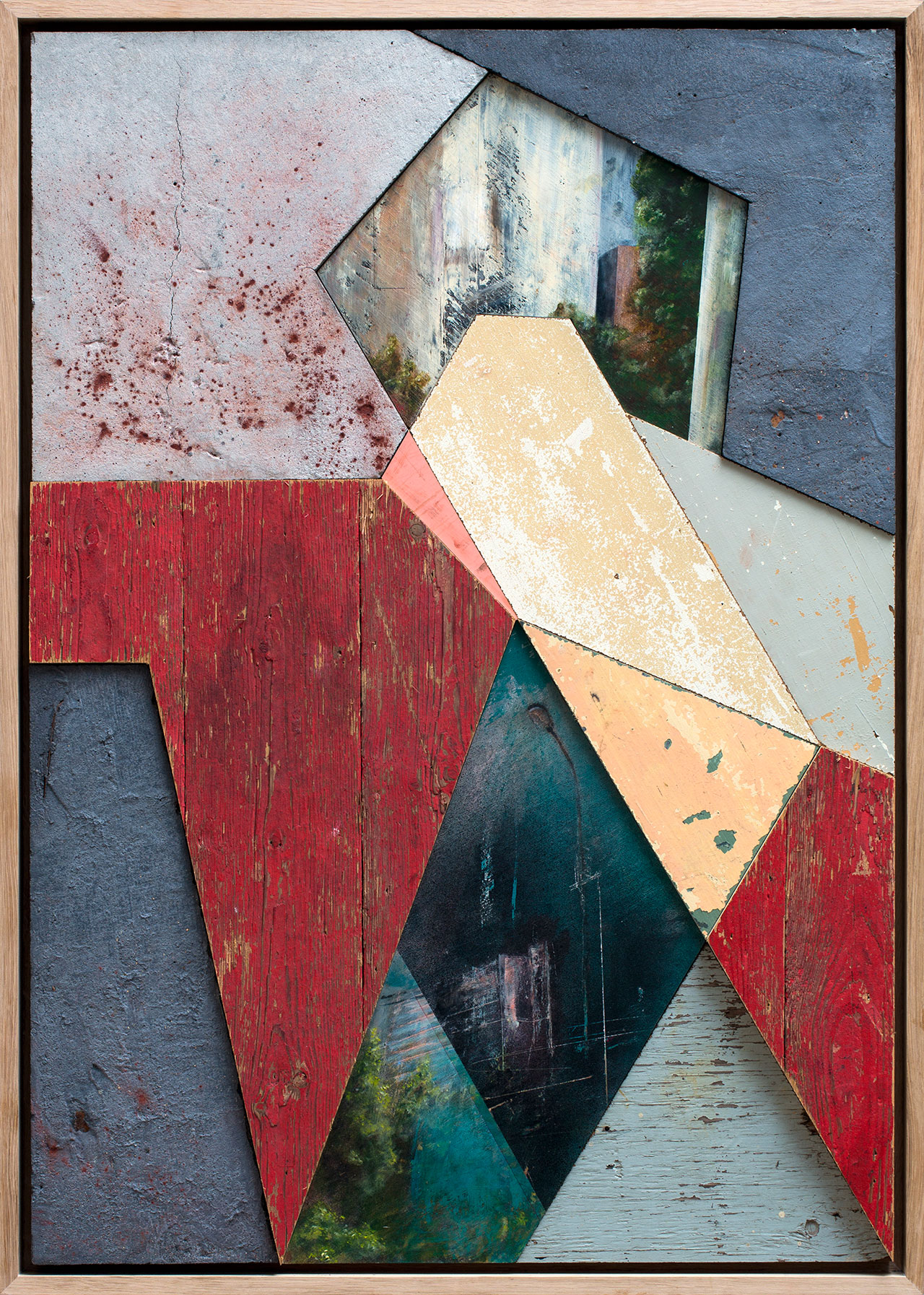
He moved on, 2015. Recycled wood, concrete, acrylic and medium on wood panel – Framed, 105 x 75 cm. Photo © Strook.
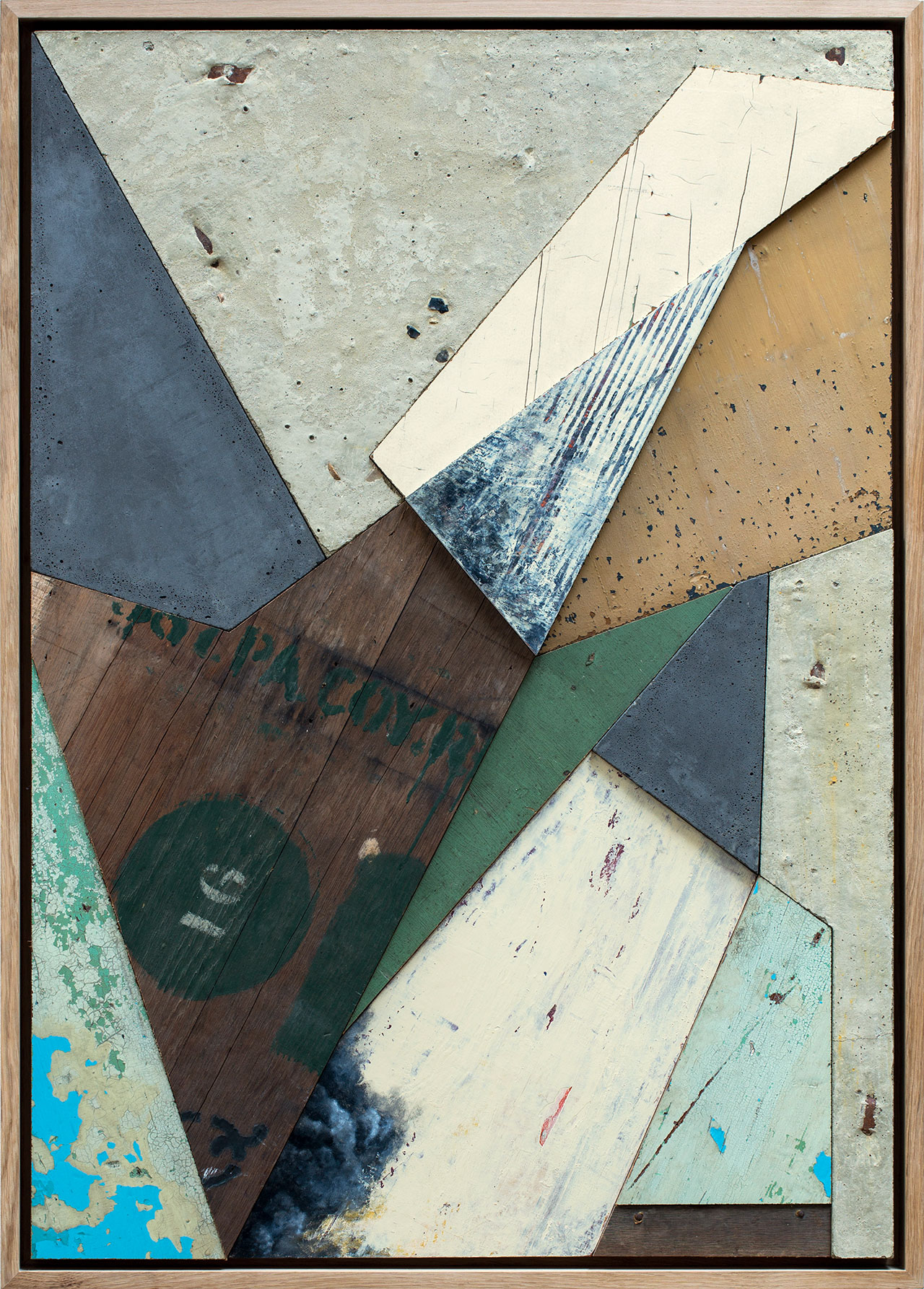
Howling like a wolf, 2015. Recycled wood, concrete, acrylic and medium on wood panel – Framed, 105 x 75 cm. Photo © Strook.
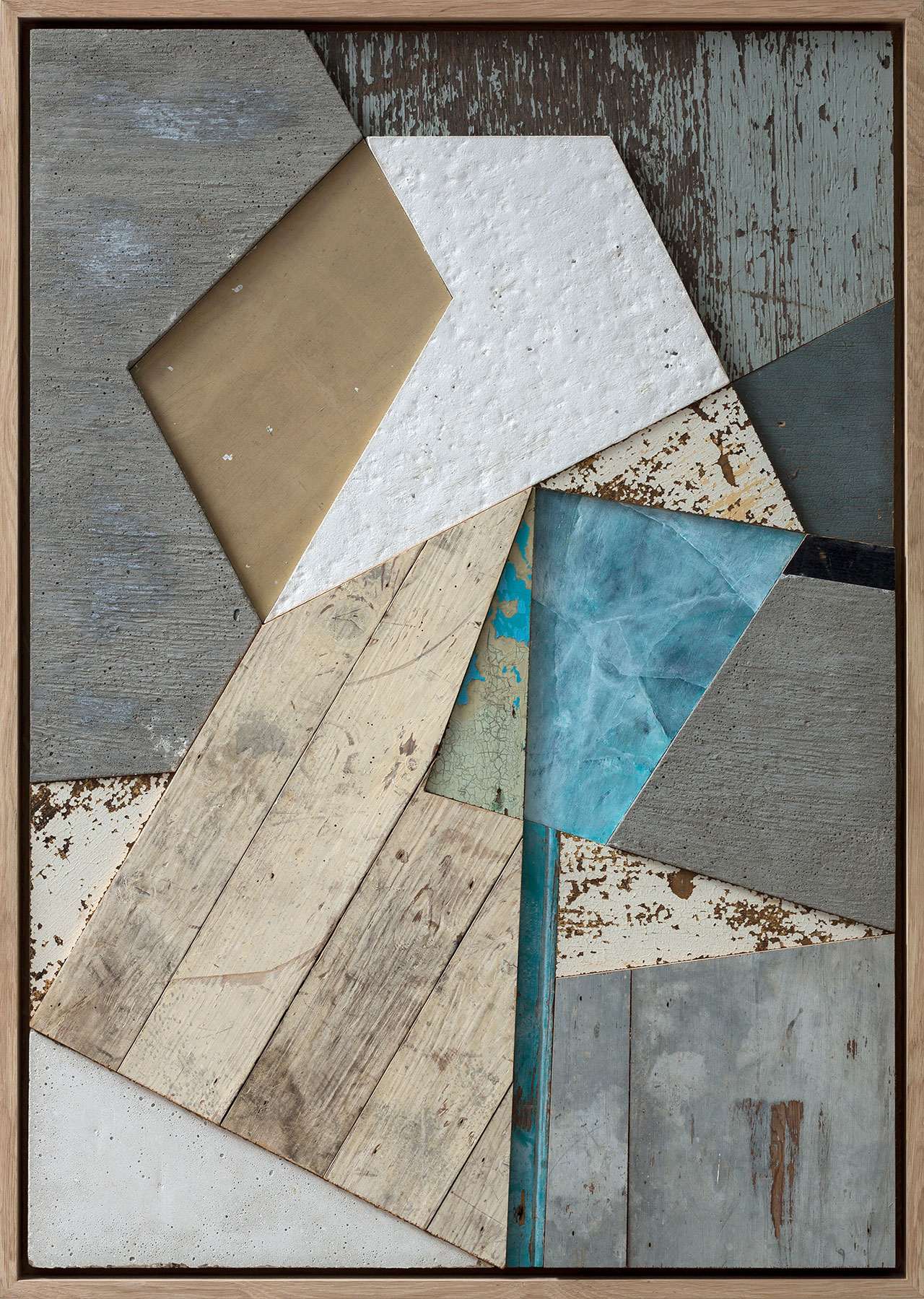
Summer is gone, 2015. Recycled wood, concrete, acrylic and medium on wood panel – Framed, 105 x 75 cm. Photo © Strook.
Stefaan studied Fine Art at Sint-Lucas in Ghent and although it’s a great inspiration to him, fine art isn’t the only background which came into play when Stefaan first began Strook in 2011. His father, an excellent wood worker also helped Stefaan produce his early collage artworks. “It was interesting and eye-opening to combine his knowledge with my artistic ideas,” Stefaan says. He’s since established his own atelier but still enjoys the help of his father with the building of the time-consuming, big murals.
No matter the scale or scope of a piece, Stefaan tells us that all his artworks begin as “automatic workings” of his hand, line drawings done in his sketchbook or on a piece of paper. Sometimes, he has a specific piece of wood in mind when he begins his composition but usually he chooses the scale and materials for a specific piece afterwards. Regardless, that sketch is used as a guideline because he finds that, “The act of creation is very important; that’s when the soul of an artwork is born.” This often involves him gazing for a long time at a certain piece of wood—analyzing it in order to discern if it will work in his composition—before he carefully cleans and cuts it to the right form. “The making process is very important; sometimes something unexpected happens and I love to work with those coincidences,” he says.
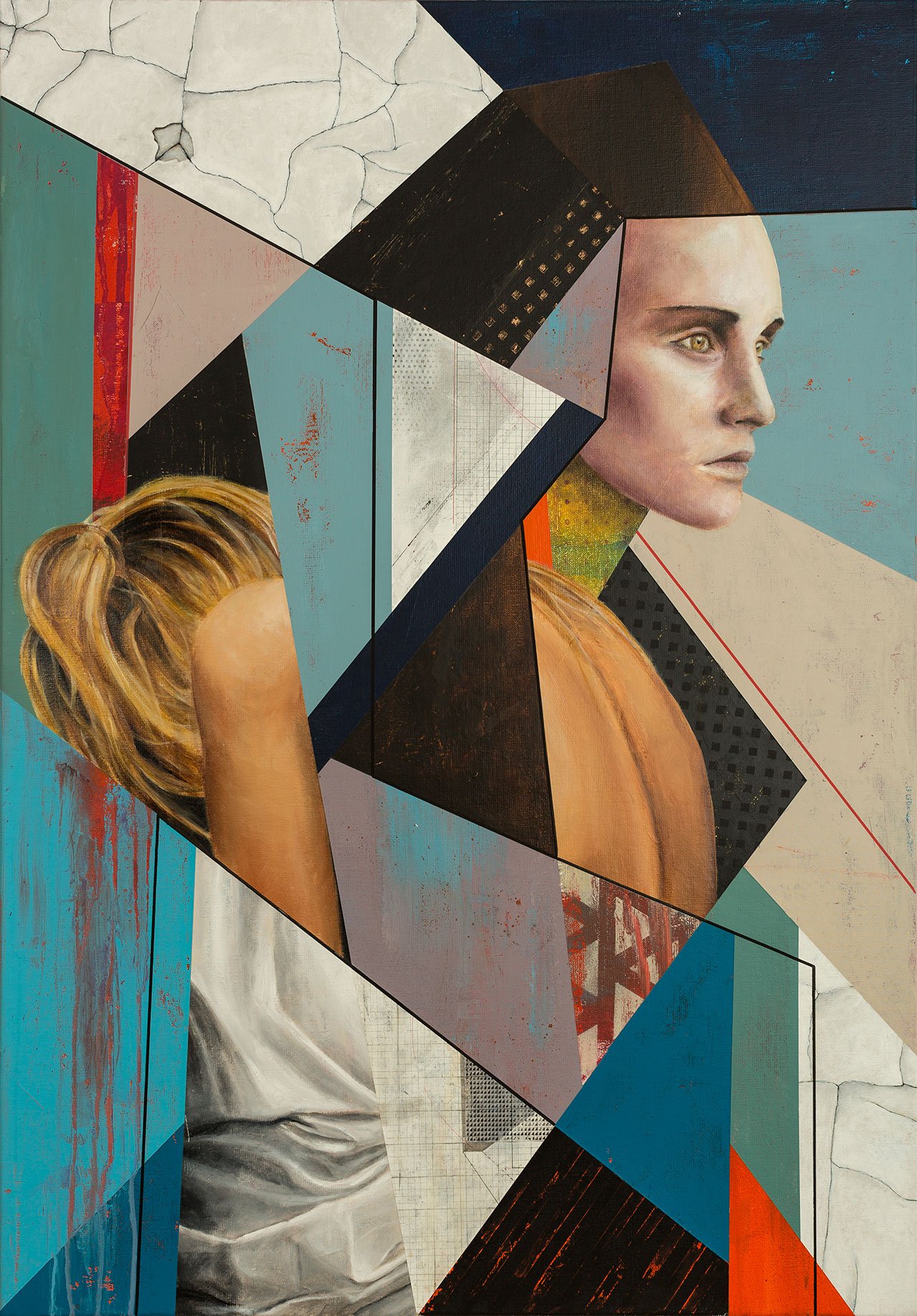
This was definitely the last compromise, 2015. Acrylic, spraypaint, ballpoint pen & markers on canvas, 70 x 100 cm. Photo © Strook.
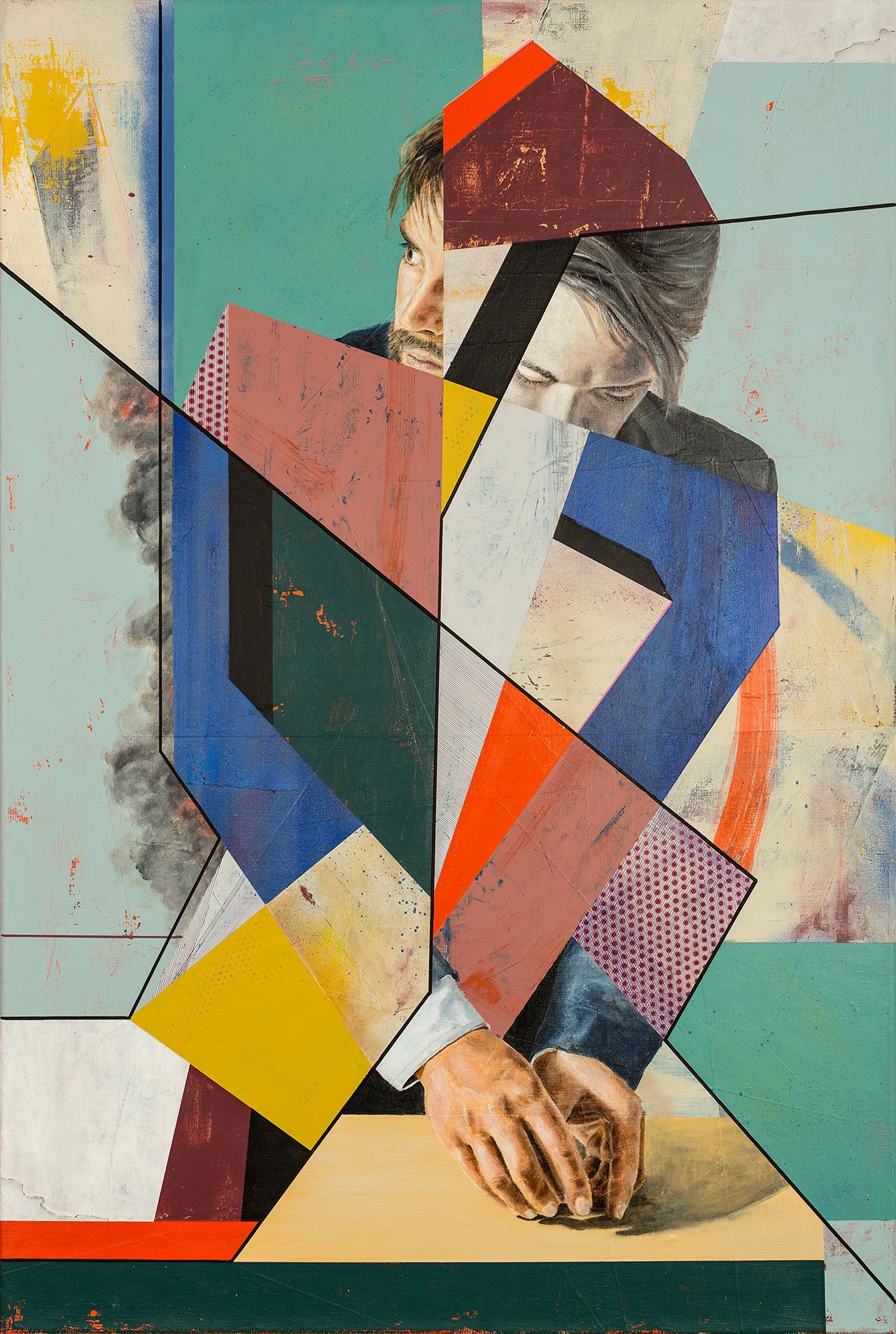
This was when the maker became the destroyer, 2015. Acrylic, spraypaint, ballpoint pen & markers on canvas, 60 x 90 cm. Photo © Strook.

This was the last compromise, 2015. Acrylic & markers on canvas, 80 x 100 cm. Photo © Strook.
Large scale art involves the necessity of first building a strong supporting structure and treating the wood in a way so as to endure weather fluctuations but without compromising its historical essence. Location is also always an inspiration, such as the wall on which the mural, “Elsewhere,” was constructed—the side wall of an abandoned furniture factory that shows traces of a previously adjoined house. “The melancholic, even fragile, pose of the figure in the artwork symbolizes a person in the comfort of his home, where he can feel truly himself,” Stefaan says. “The old and eroded wall of the factory is also a perfect background for the installation because it has a captivating ‘patina’ which splendidly accentuates the wood. I wanted to create an underlying contrast between the old patina of the discarded wood and the sharp, geometric style of the artwork itself.”
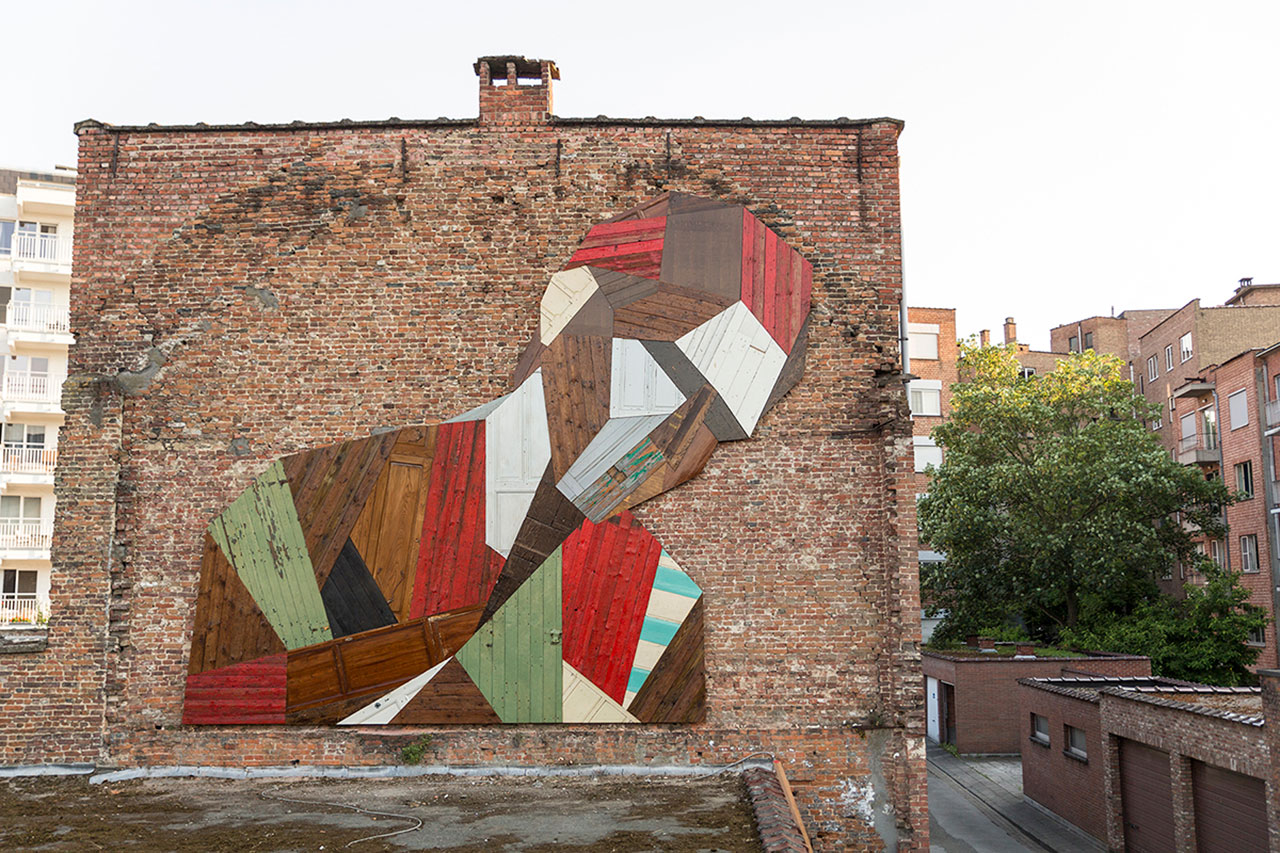
Elsewhere. Photo © Strook.
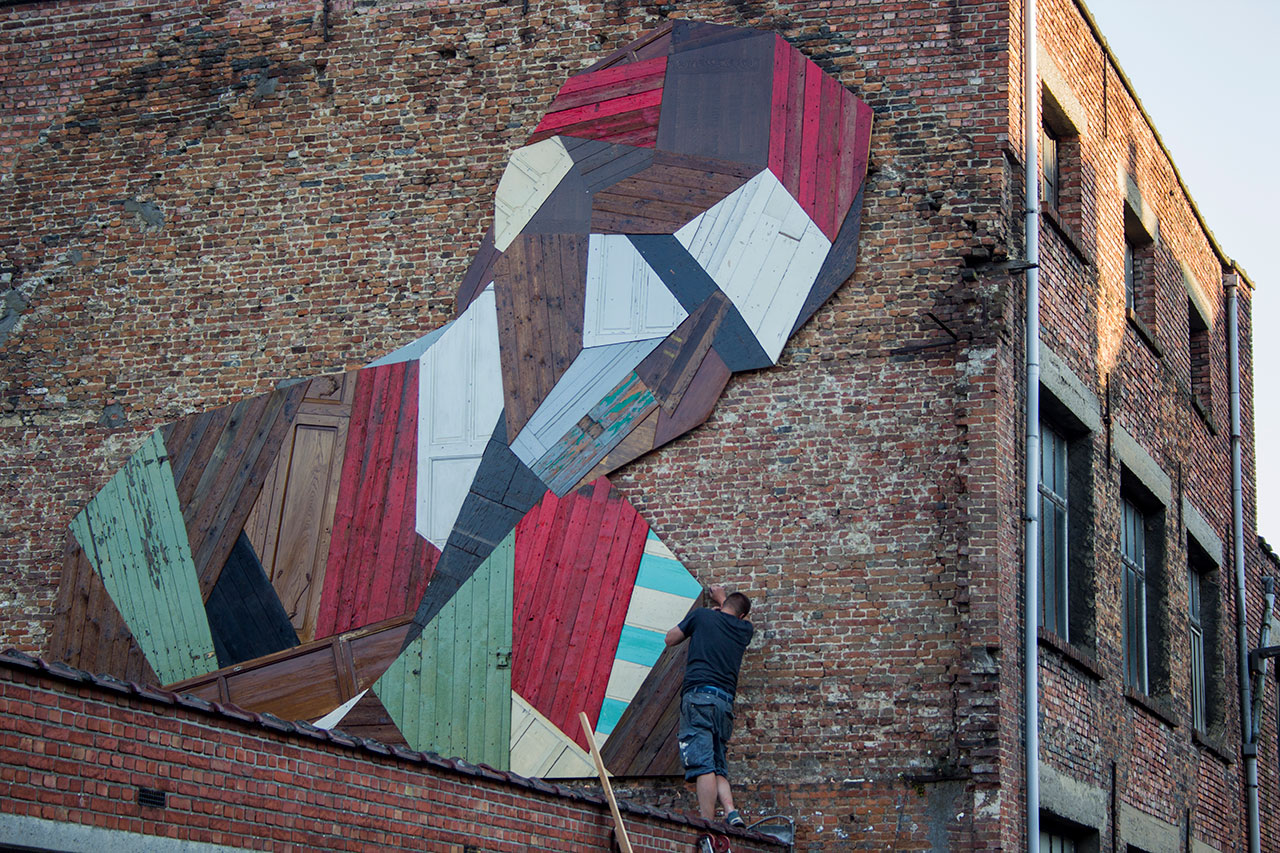
Elsewhere, 2015. Photo © Strook.
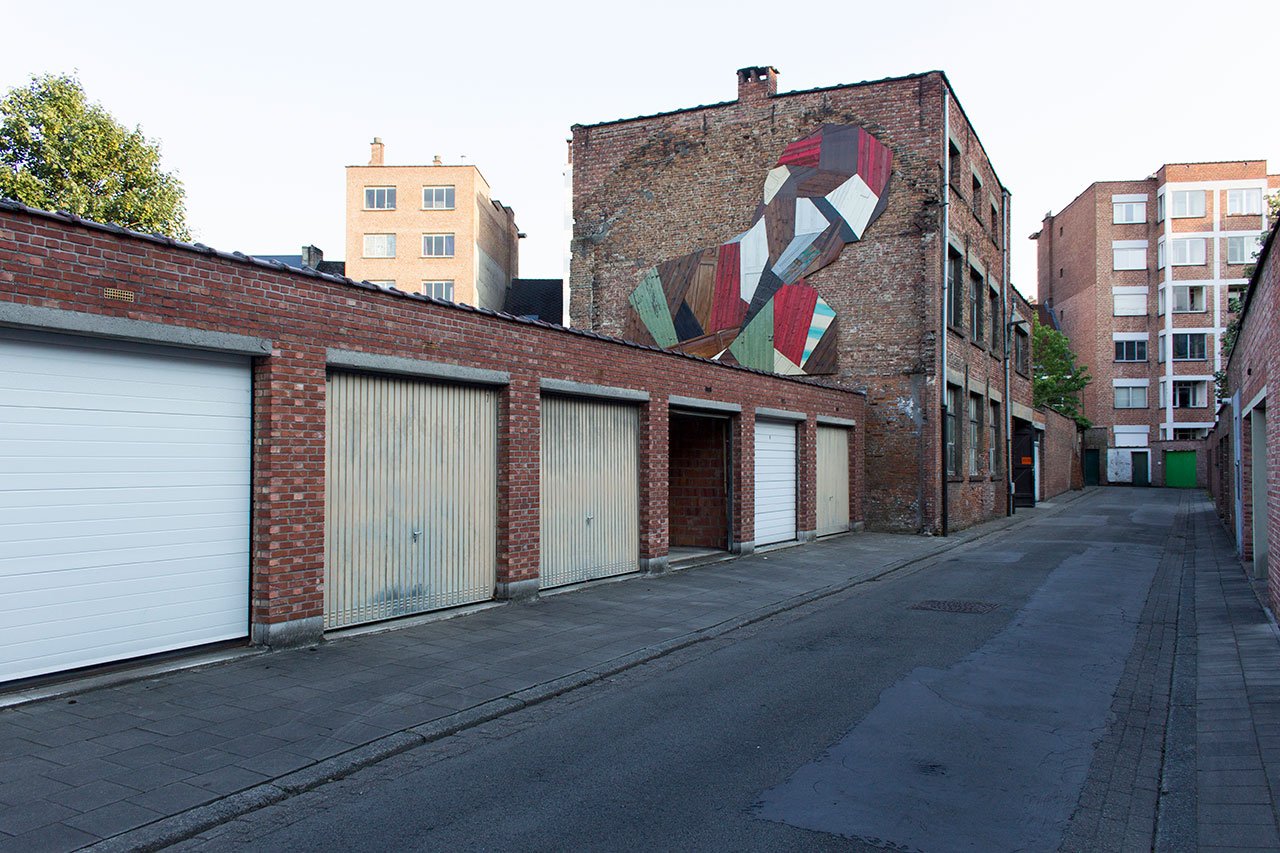
Elsewhere. Photo © Strook.
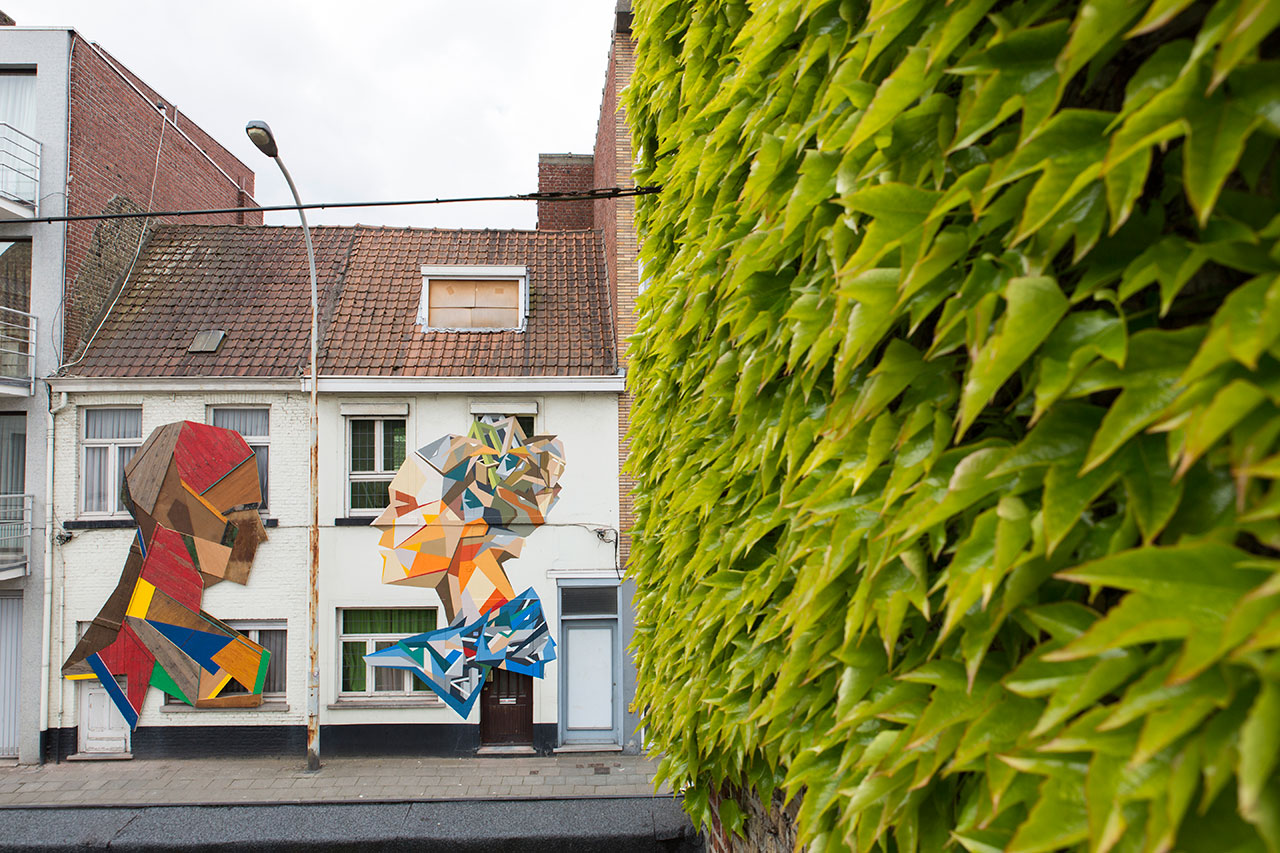
Wood & paint, 2014. Photo © Strook.
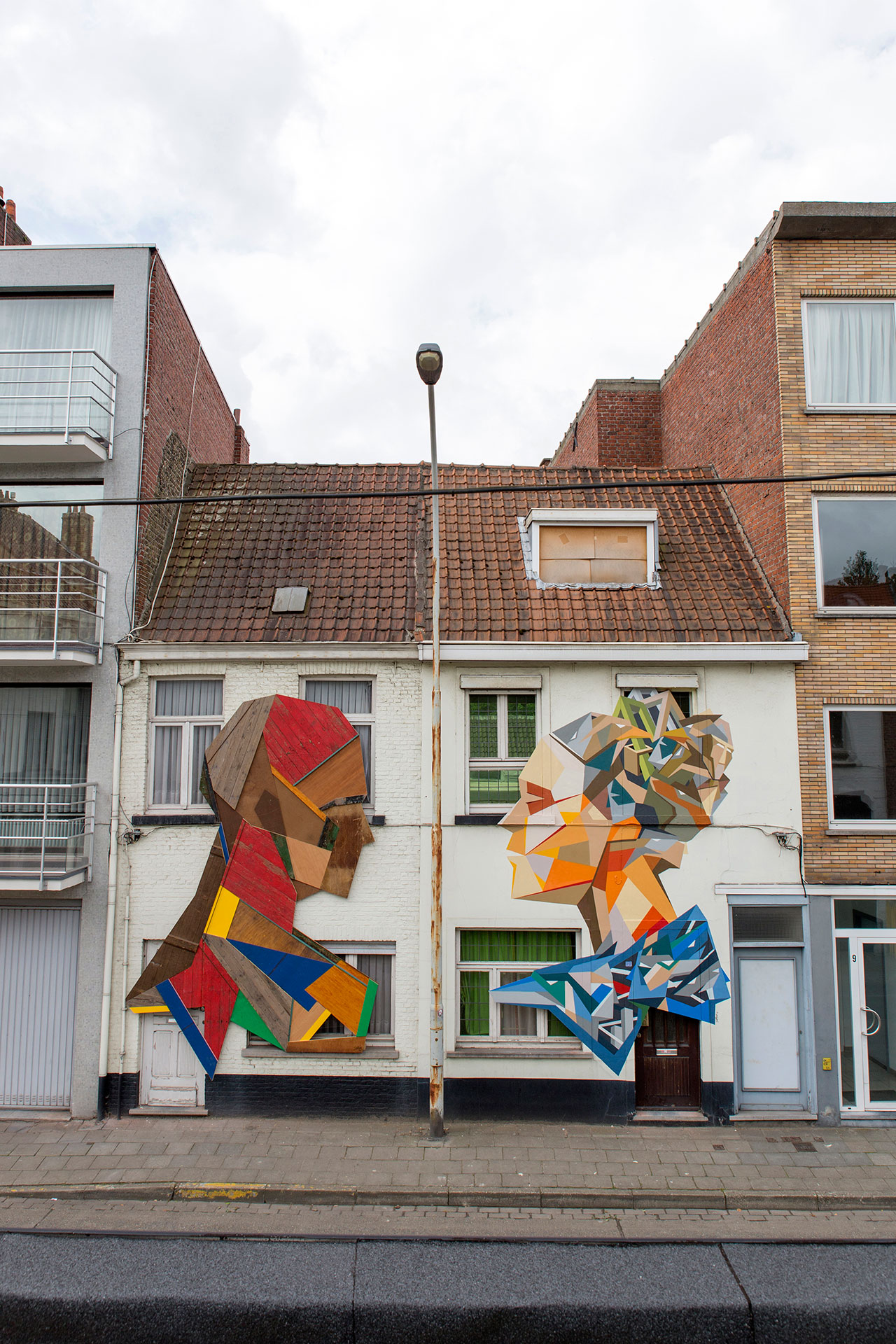
Wood & paint, 2014. Photo © Strook.
But Strook isn’t only about reclaimed wood, concrete and paint. In January 2012, emerging talent platform, “De Invasie,” invited Stefaan to create a mural on the mossy wall of the “Het Stuk” arts centre in Leuven, Belgium, during the Go Green! eco design/art event. Stefaan’s inventiveness leaped into play and he ended up utilizing a pressure washer—although he’d never used one before—to create the mural in a live, on-the-spot performance. “If I ever find another mossy wall I’d love to do it again, but they’re not easy to find!” he jokes.
Sometimes the color or texture of a found object is intriguing enough to inspire Stefaan to use it as the “core” of an artwork, followed by choosing the other materials to function around it. But the one common element that all his diverse works posses is his quest to create a “dialogue” between the different materials involved as well as with the location of the final piece. “Wood and Paint,” the first big installation he created using recycled wood, is the perfect depiction of this. “Both started as line drawings but the mediums that I used are totally different; they gaze into each other’s eyes and they are very different, yet so identical,” he says. “I believe it’s the same with us people; we have so many differences yet, in the core of our existence, we’re all the same.”

Wood & paint (detail), 2014. Photo © Strook.
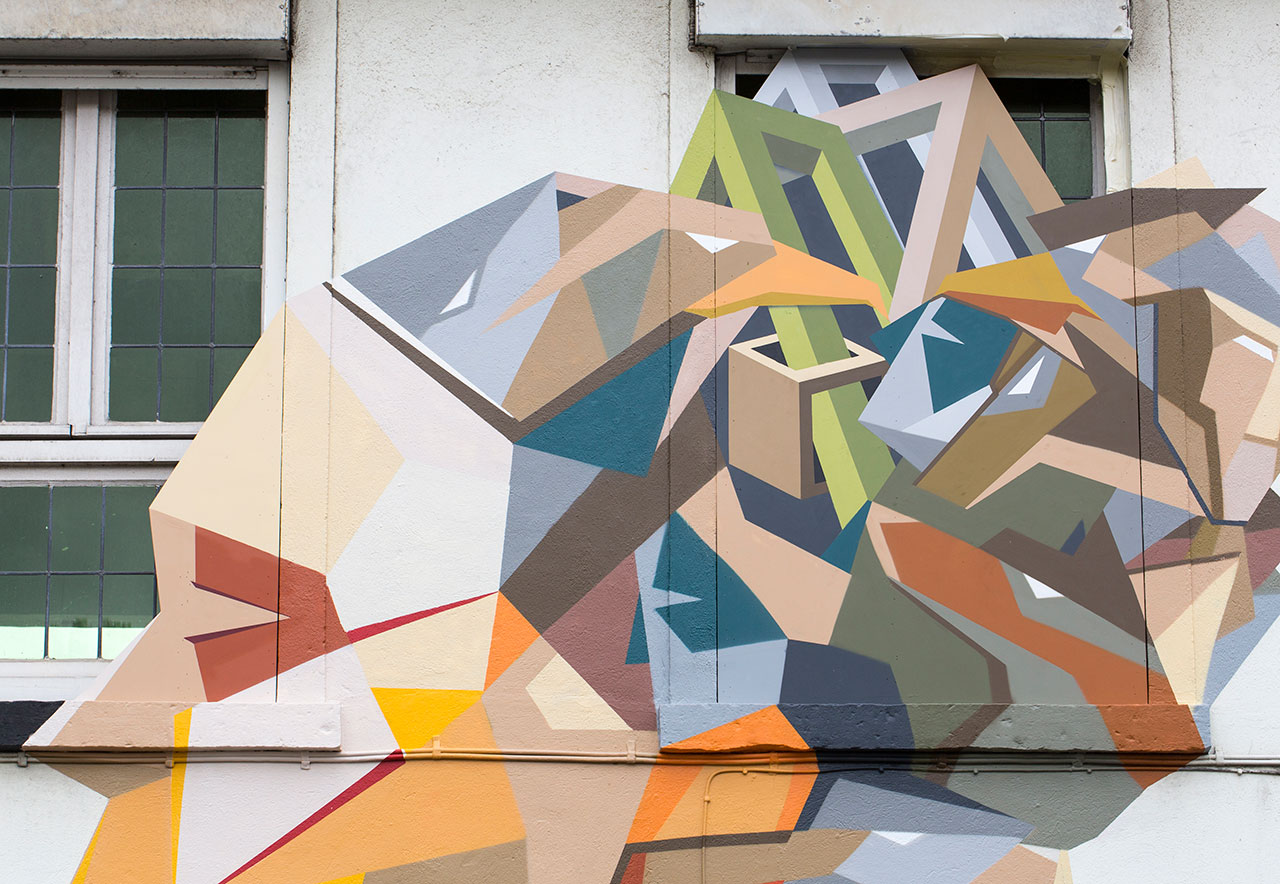
Wood & paint (detail), 2014. Photo © Strook.
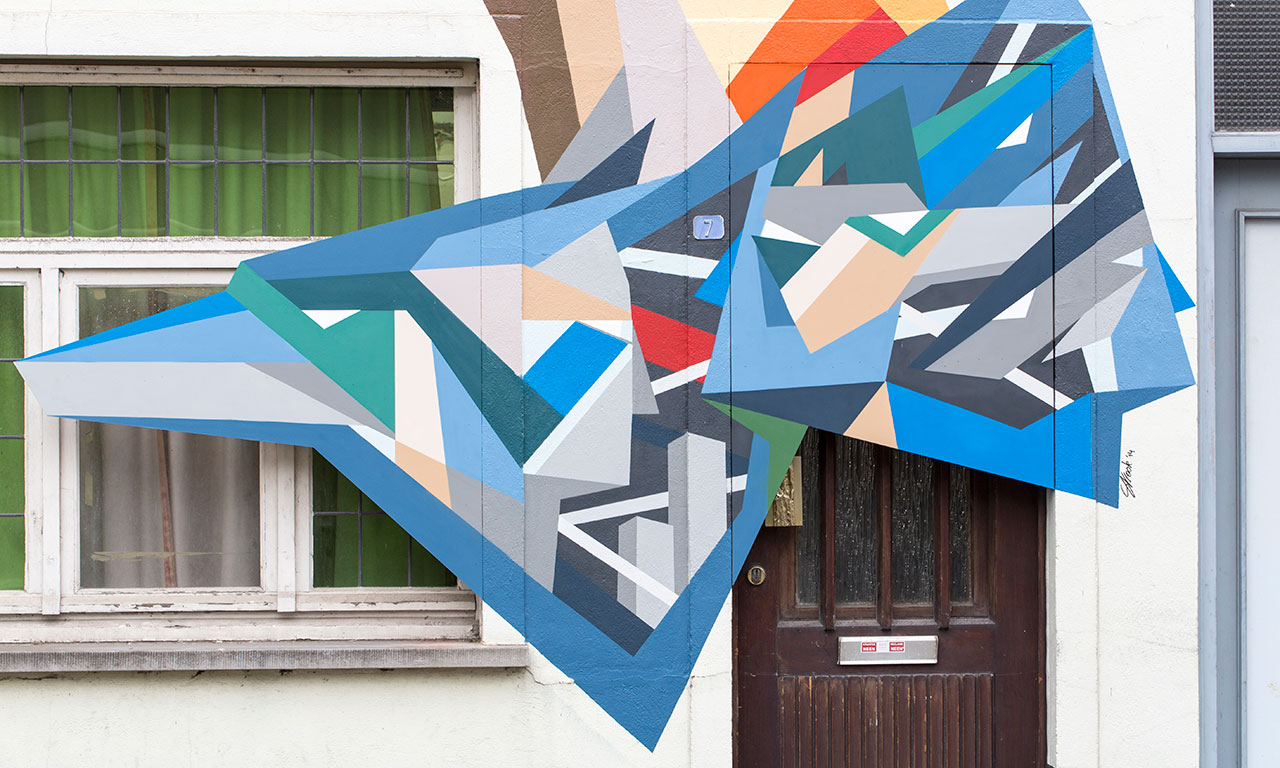
Wood & paint (detail), 2014. Photo © Strook.
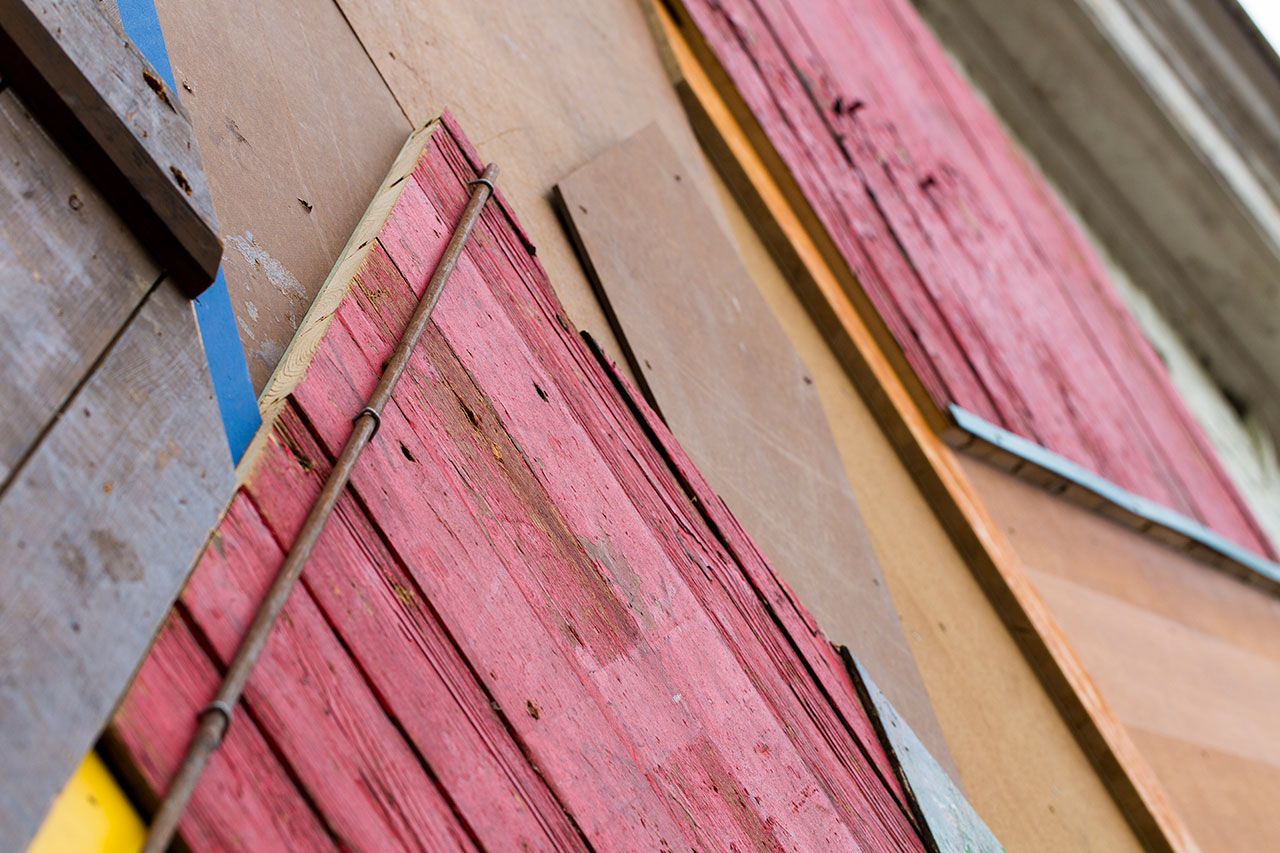
Wood & paint (detail), 2014. Photo © Strook.
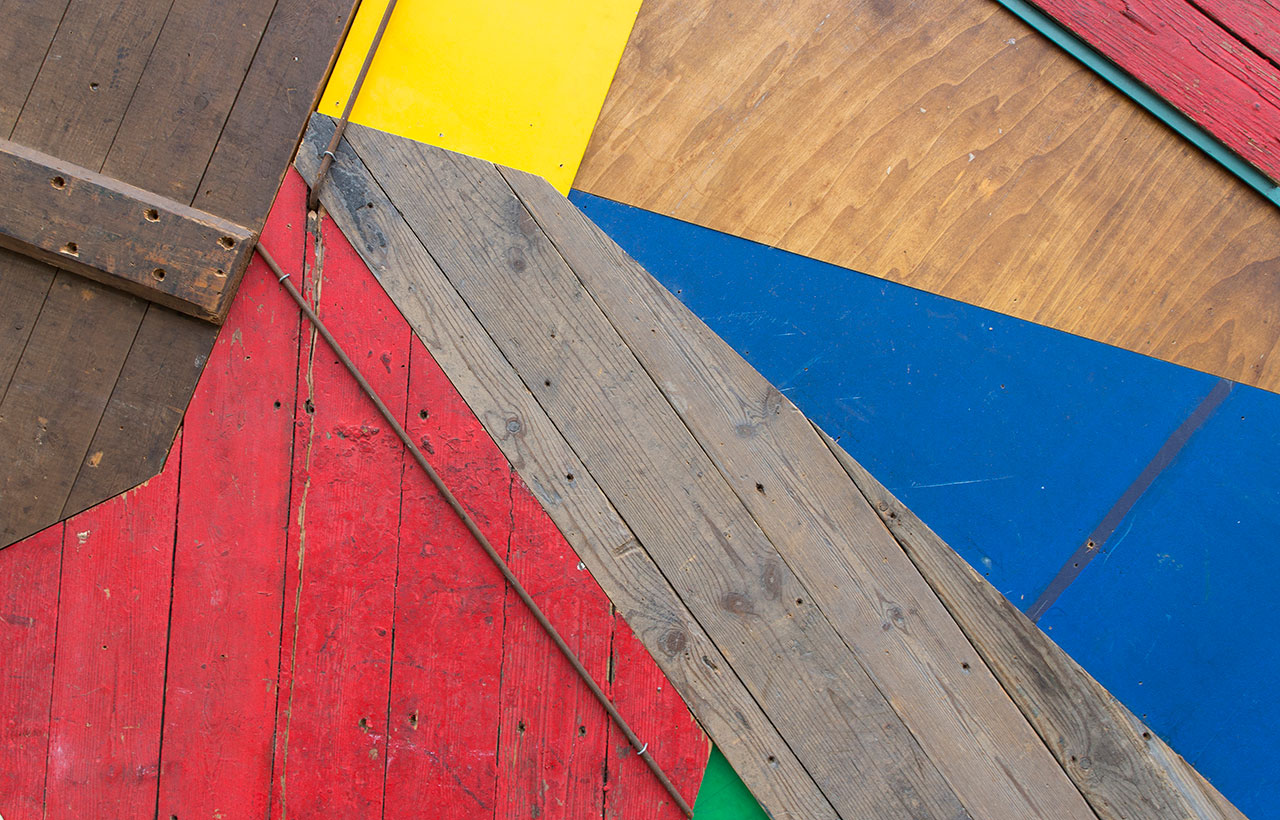
Wood & paint (detail), 2014. Photo © Strook.
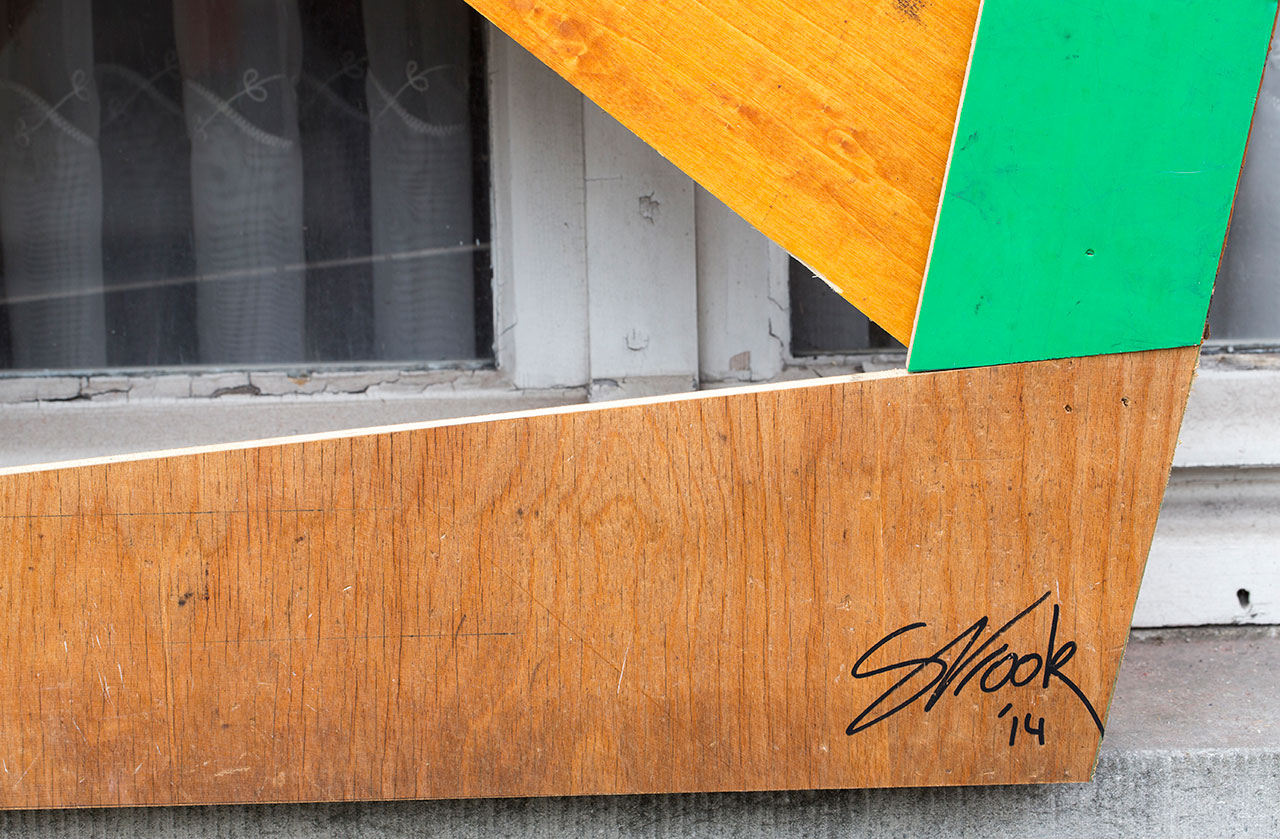
Wood & paint (detail), 2014. Photo © Strook.
At the moment, Stefaan’s creating new pieces for a solo exhibition in Brussels in the spring of 2017 before which he’s going to participate in a group show at Galerie C.O.A. in Montreal, Canada. There’s also going to be a new, recycled wood mural gracing the historic city center of Bruges this autumn. “I don’t think the perfect artwork exists, but it’s an endeavor to try to make the ultimate work,” he says. “I’m always looking for new challenges, I want to move my boundaries and discover new things and techniques…” Maybe those will be revealed at an abandoned wall near you.
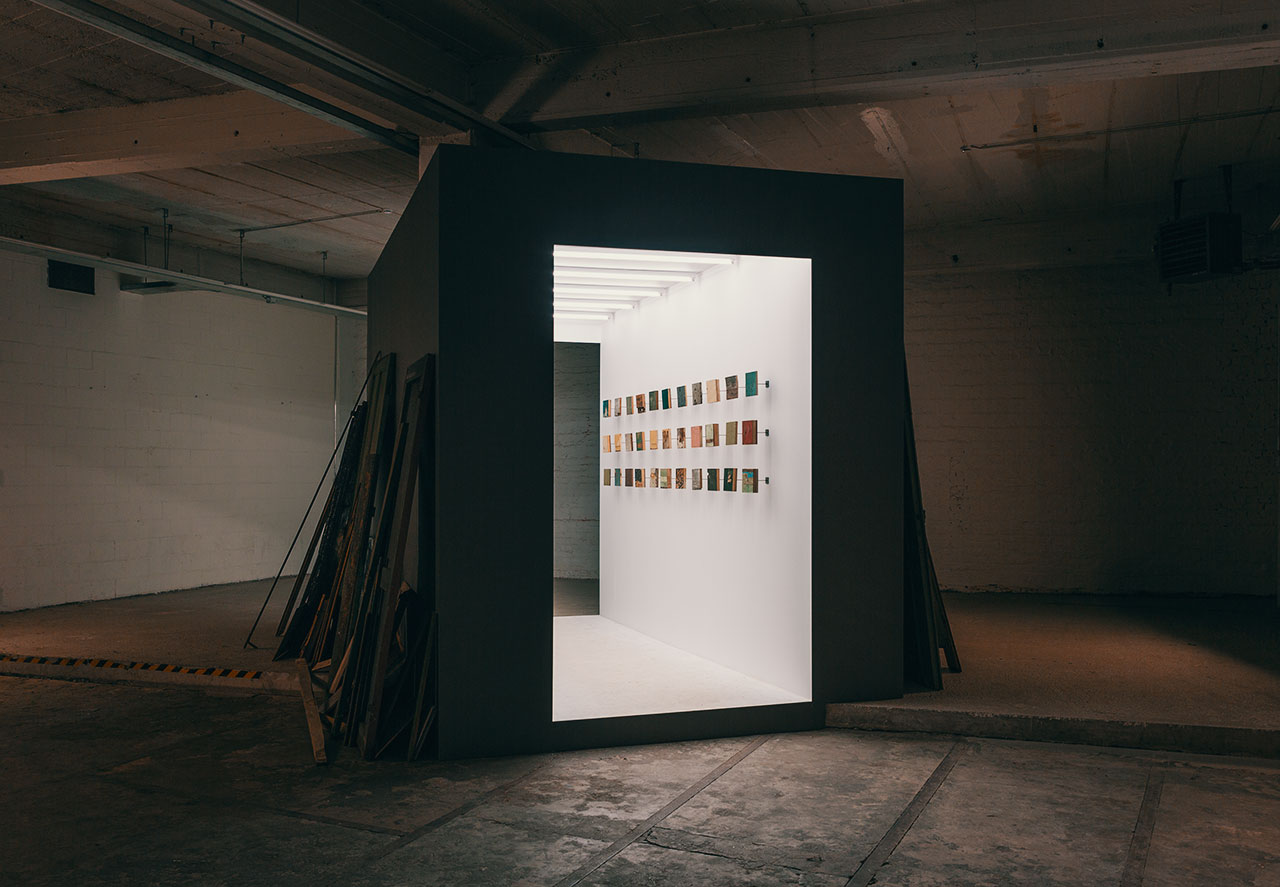
Taxixylogy, 2015. Installation view. Photo © Strook.
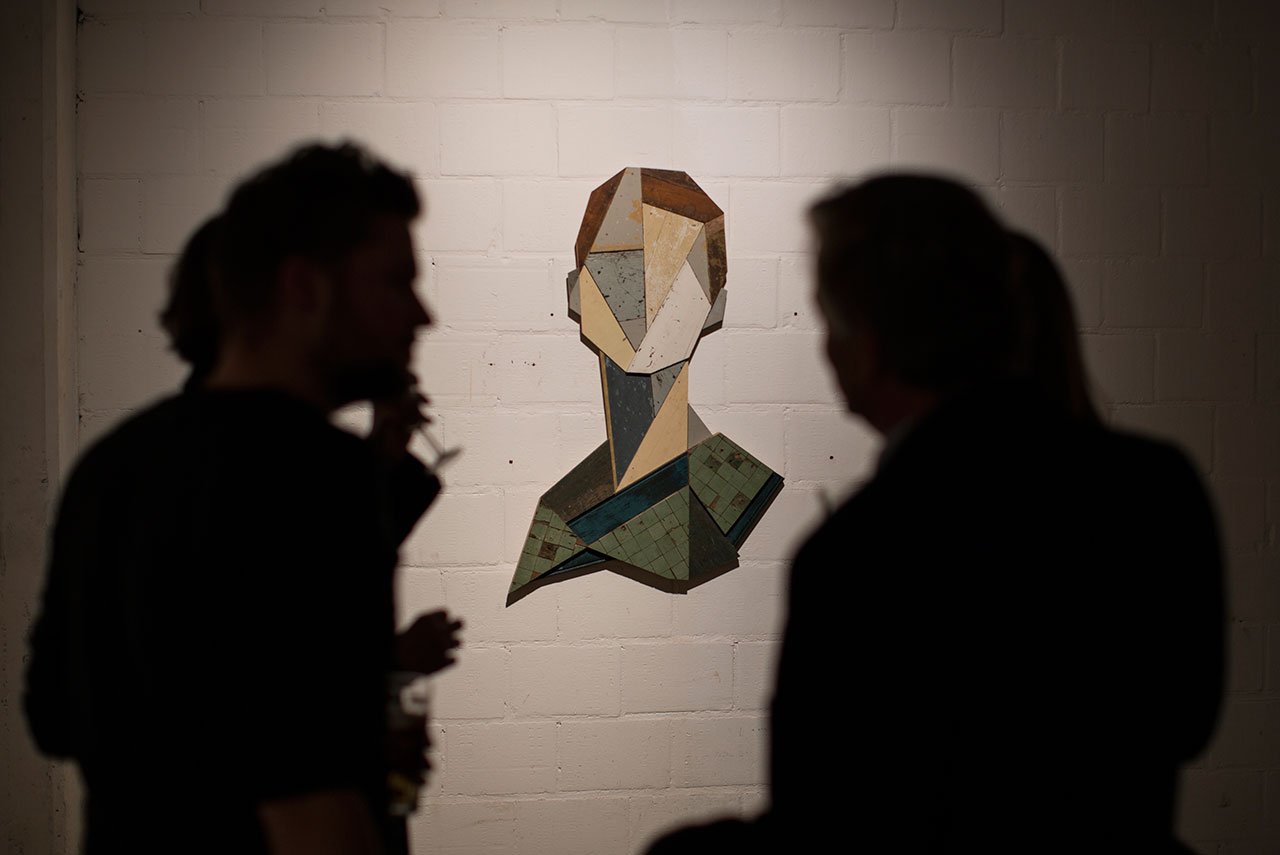
Taxixylogy, 2015. Exhibition view. Photo © Strook.
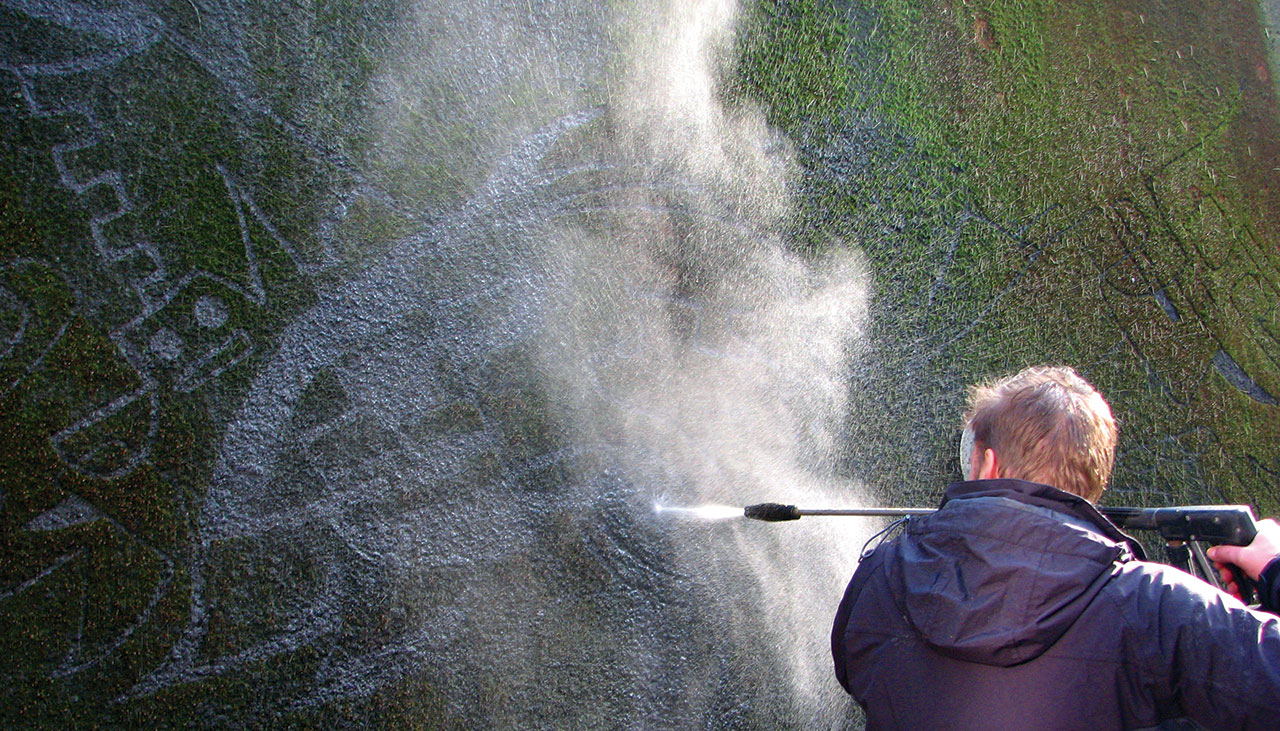
Reverse art, 2012. Photo © Strook.
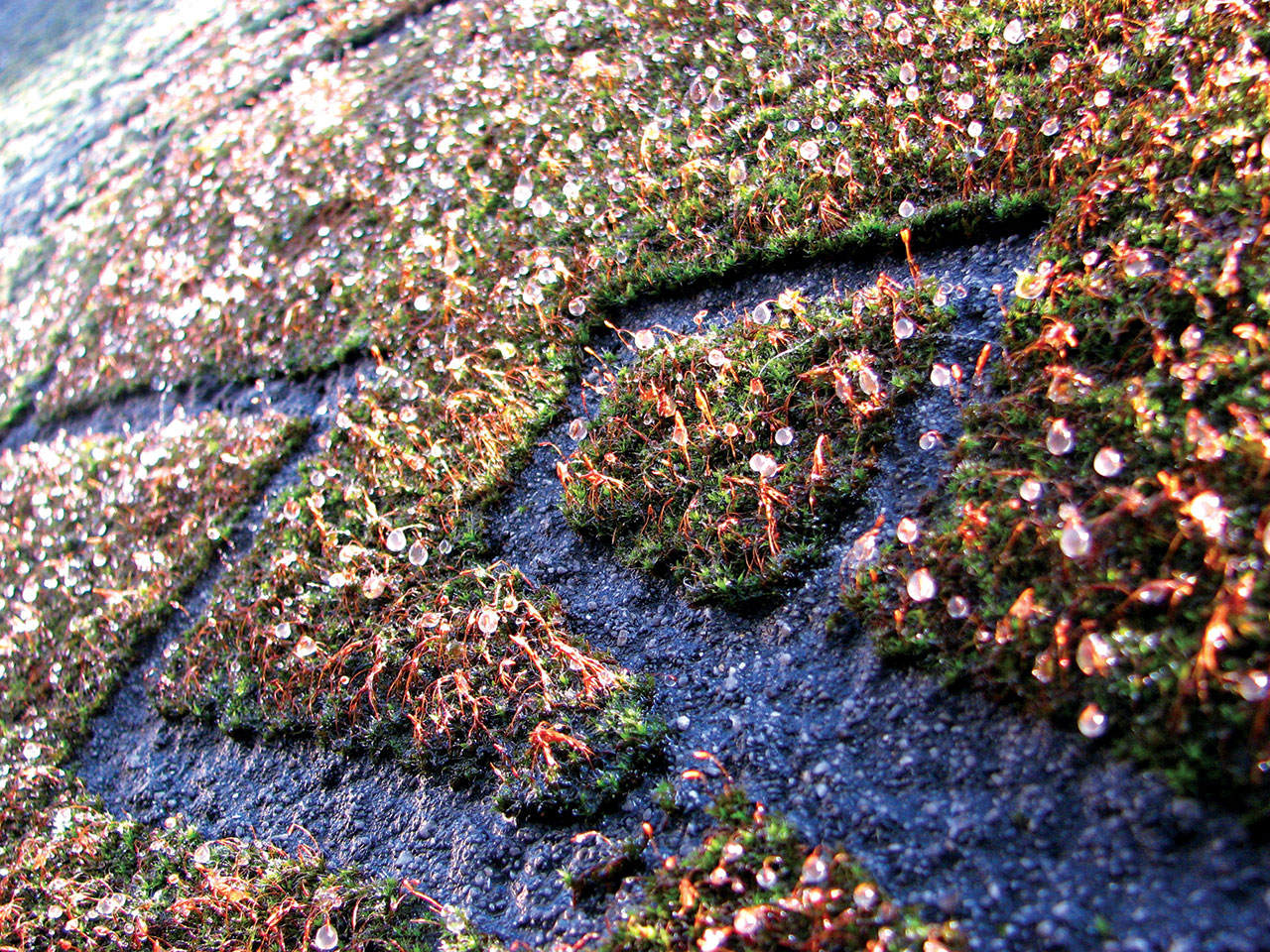
Reverse art, 2012. Photo © Strook.
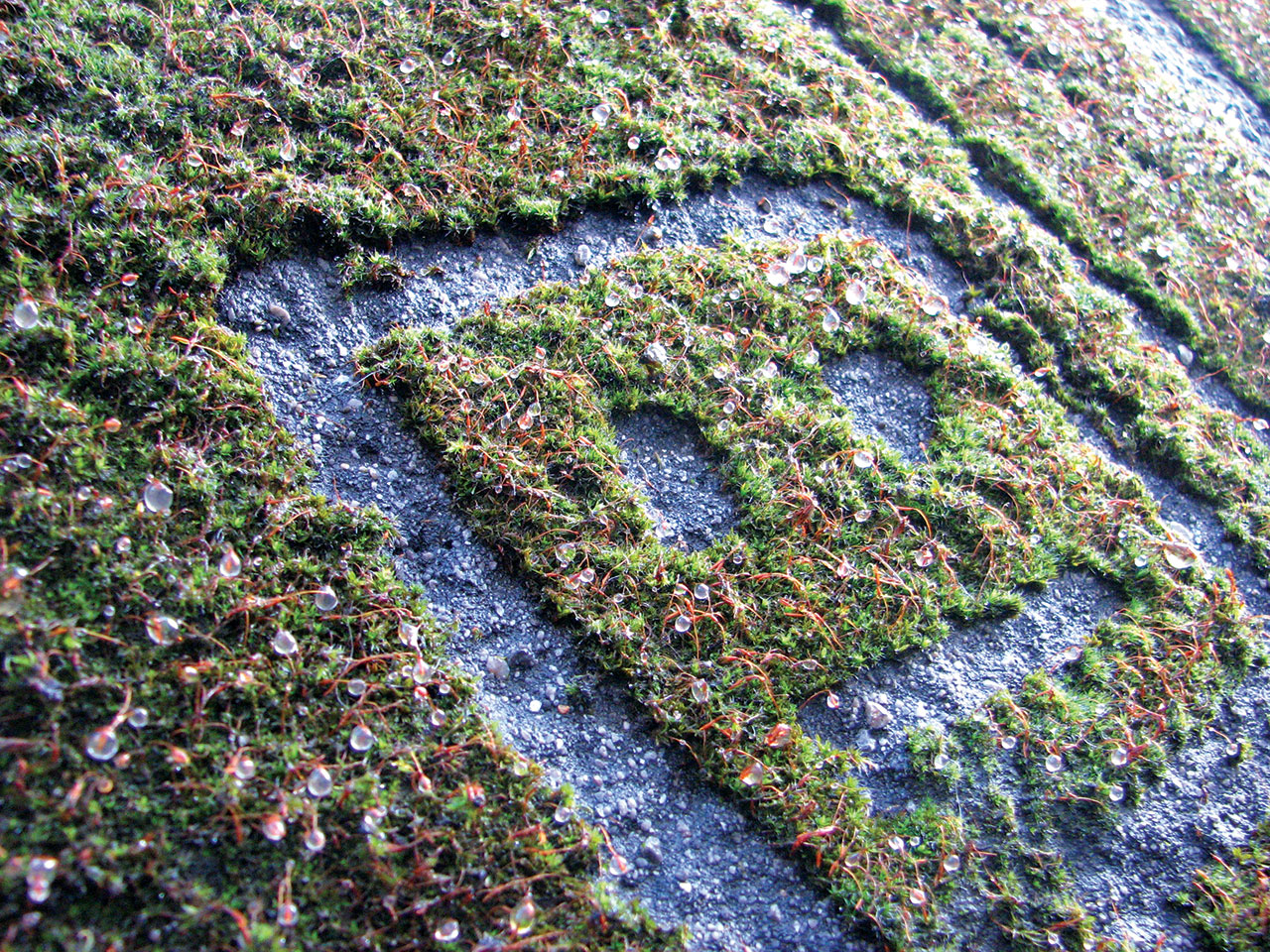
Reverse art, 2012. Photo © Strook.
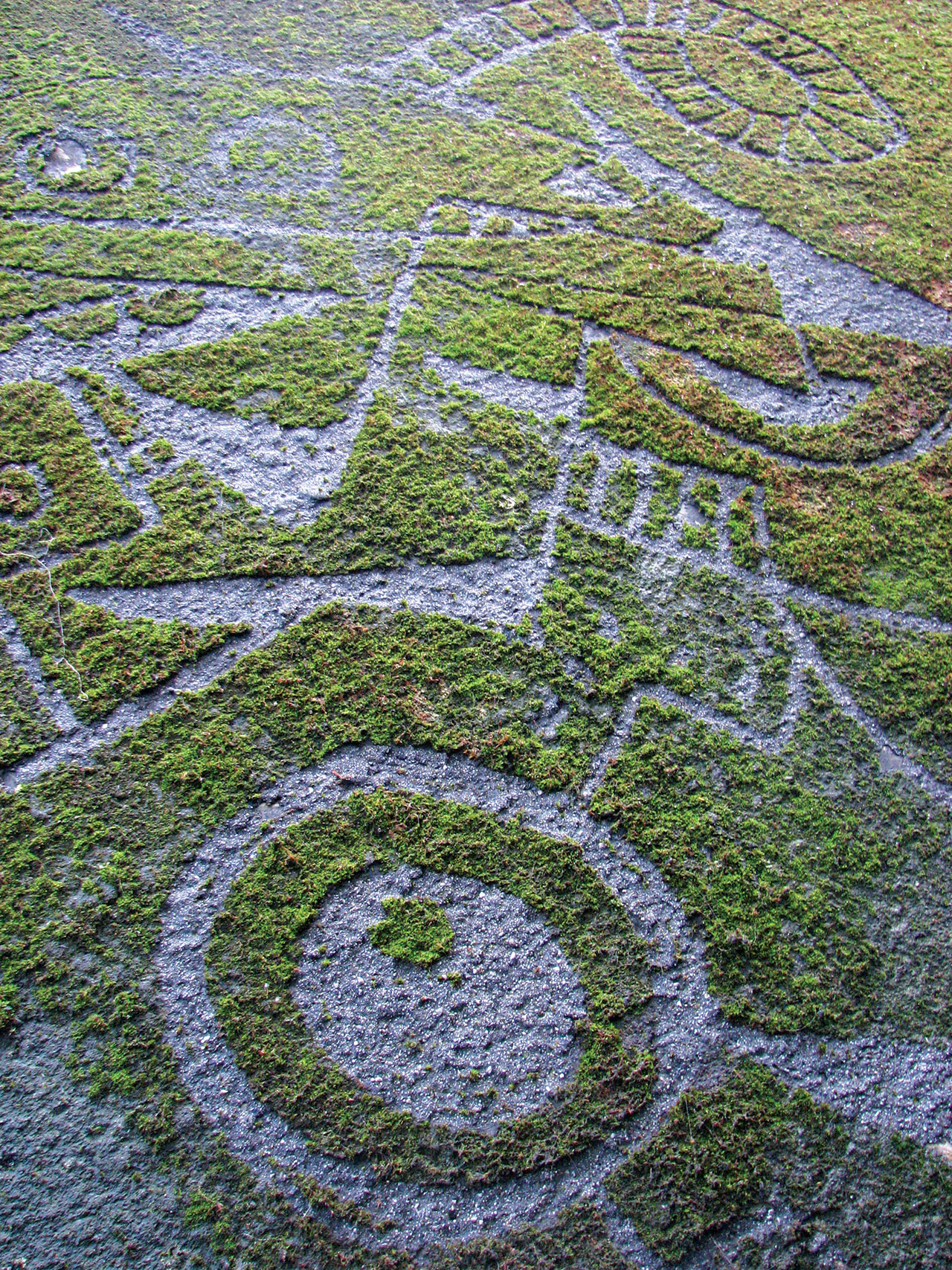
Reverse art, 2012. Photo © Strook.
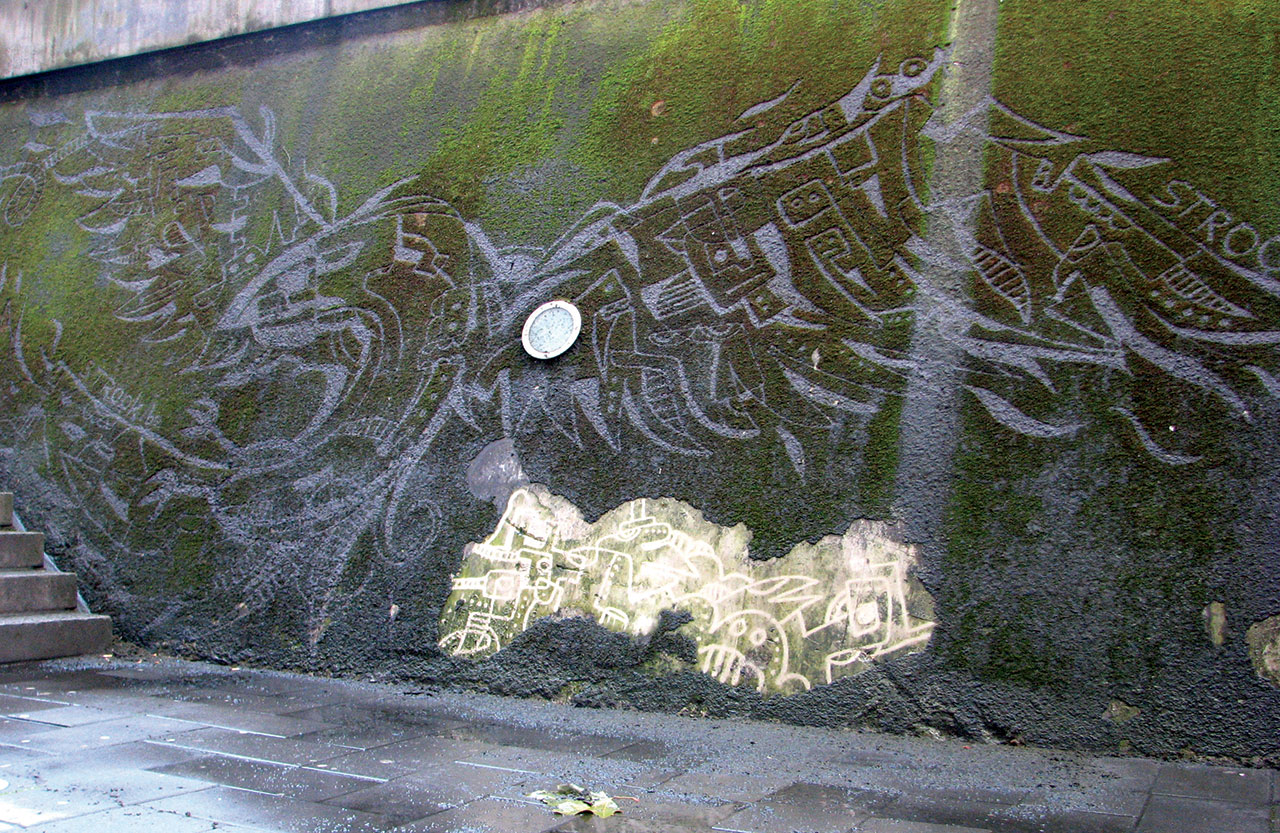
Reverse art, 2012. Photo © Strook.

